Roadkills in Northern Peninsular Malaysia
An erratum on
Roadkills in Northern Peninsular Malaysia
by Hui, T. C. Y., Slade, E. M., and Chong, J. L. (2021). Front. Environ. Sci. 9:637462. doi: 10.3389/fenvs.2021.637462
Due to a production error, some vital values in Tables 1–3 were not marked in bold. Bold values in Table 1 signifies “Total values” and the bold values in Tables 2‐3 signifies “The most parsimonious models.” The corrected Tables 1–3 appear below.
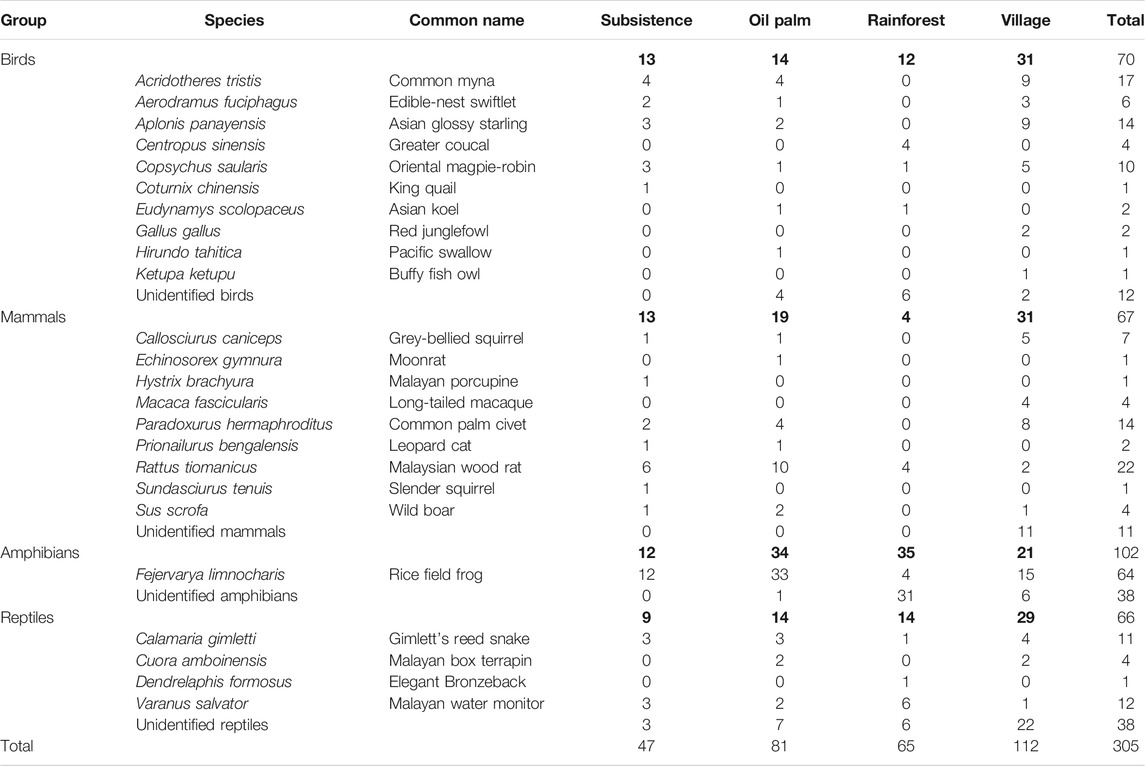
TABLE 1. Vertebrate roadkills found in the road segments listed by number of individuals per taxonomic group, species, and habitat type. A number of roadkills were unidentifiable because carcasses were too degraded. Bold values signifies “Total values”.
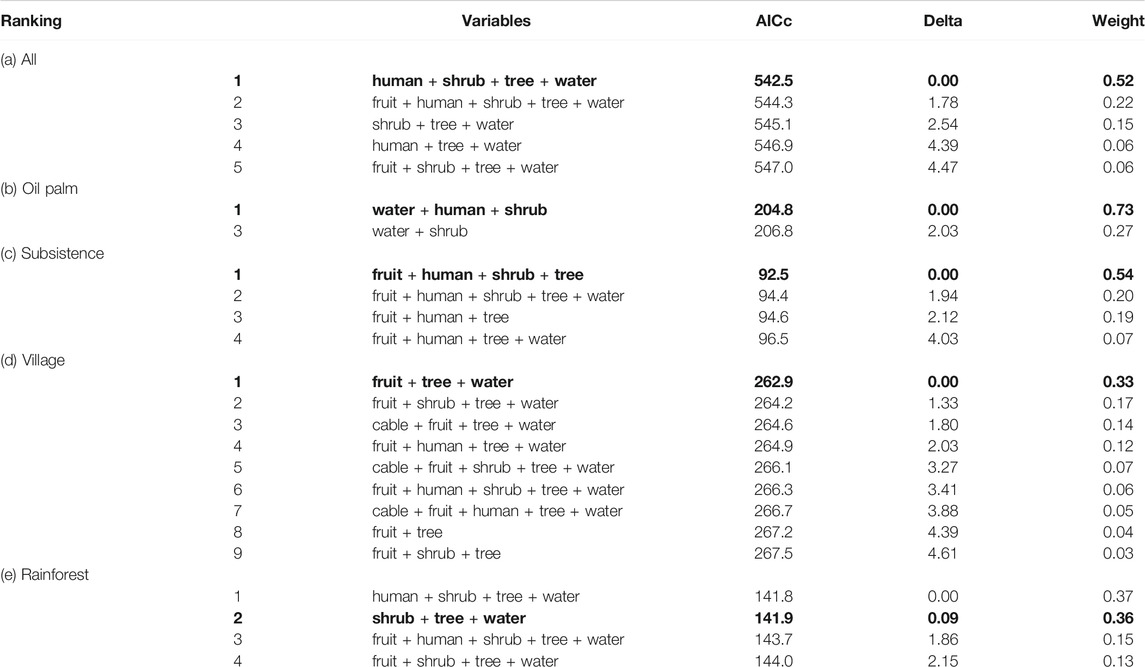
TABLE 2. Ranking of the best statistical models which were retained in each confidence set, where the Akaike’s difference (Delta) with the top-ranked model was less than 5.0, following the Information Theoretic approach, for (a) all habitats and taxa combined, (b) oil palm, (c) subsistence agriculture, (d) village, and (e) rainforest habitats. The most parsimonious models are in bold. Weight refers to the cumulative weight of the models starting from the top ranked model. Bold values signifies “The most parsimonious models”.
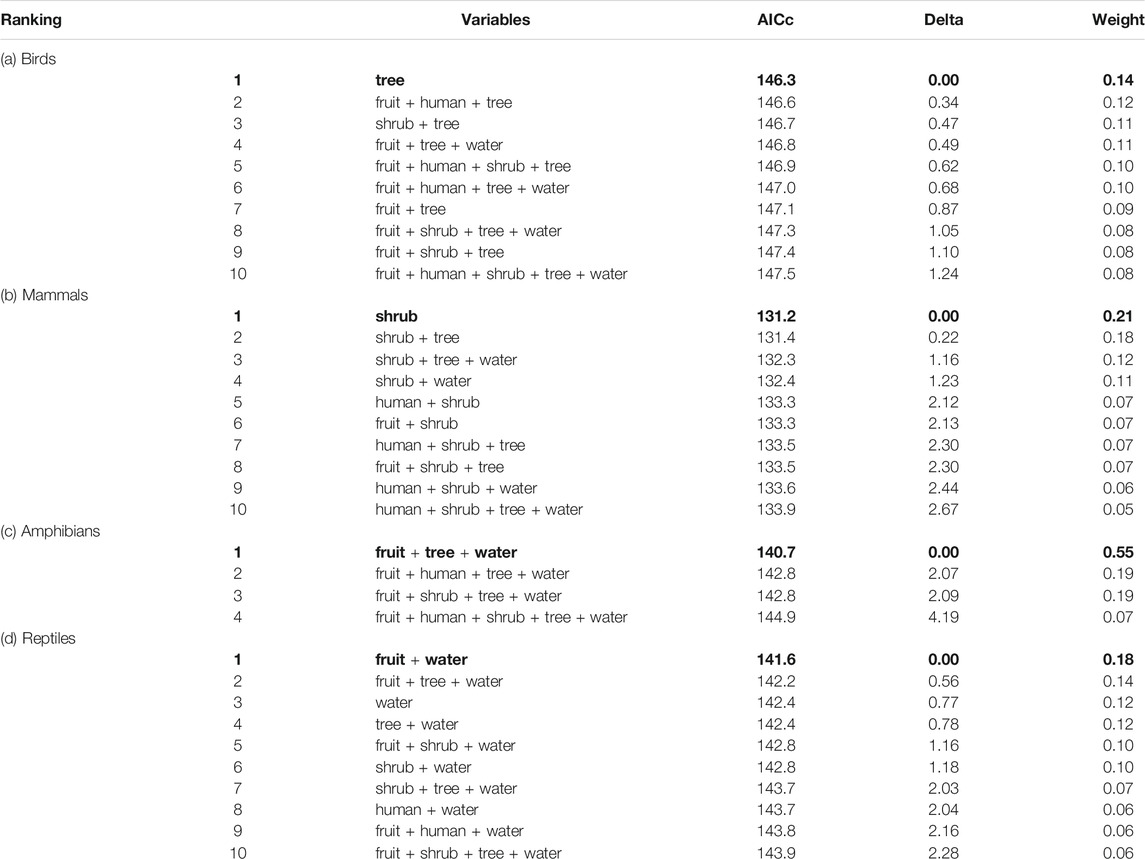
TABLE 3. Ranking of the best statistical models which were retained in each confidence set, where the Akaike’s difference (Delta) with the top-ranked model was less than 5.0, following the Information Theoretic approach, for (a) birds, (b) mammals, (c) amphibians, and (d) reptiles. The most parsimonious models are in bold. Weight refers to the cumulative weight of the models starting from the top ranked model. Bold values signifies “The most parsimonious models”.
Figures 1–3 in the article as published had low resolution and have been corrected and appear below.
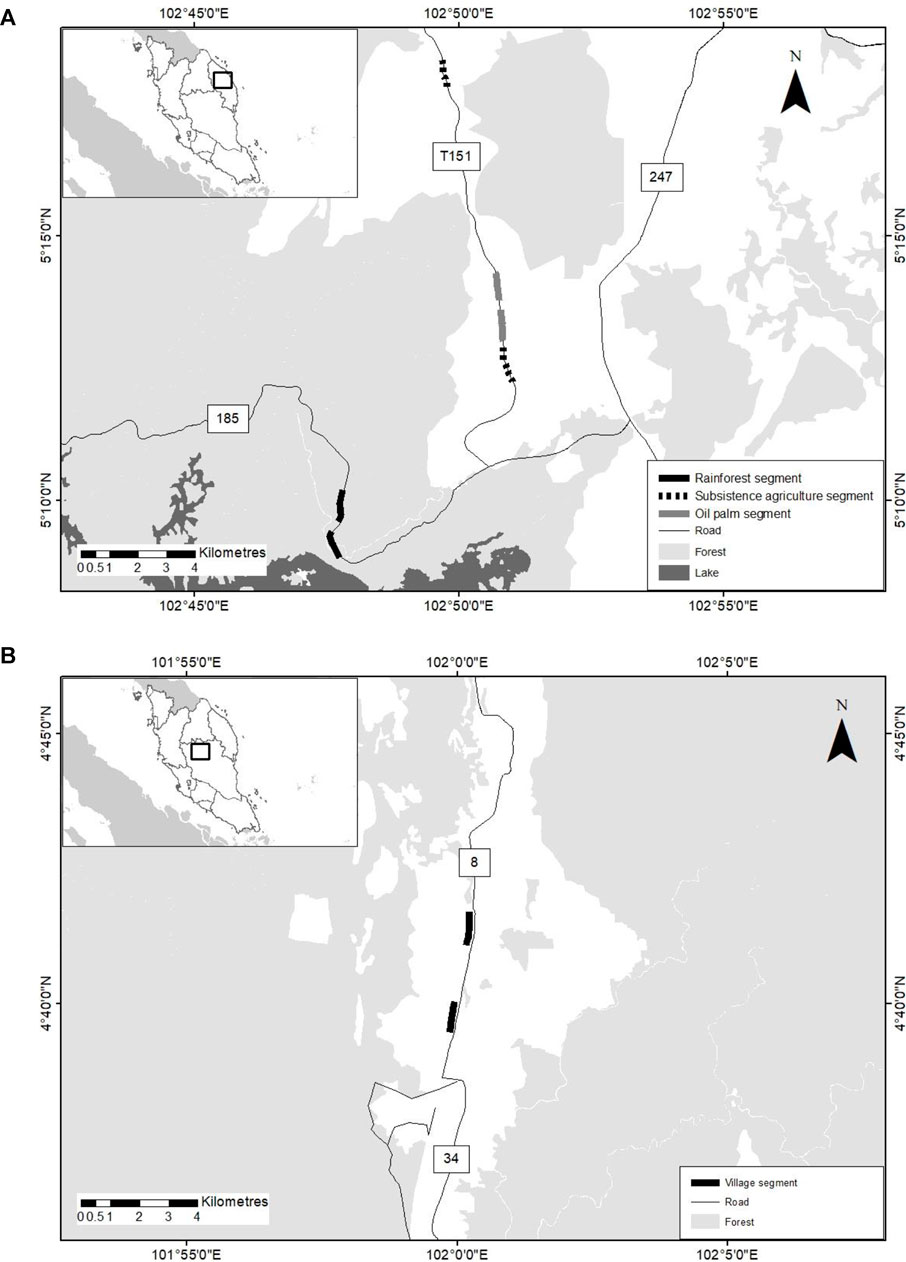
FIGURE 1. Map of the surveyed road segments within Terengganu (A) and Pahang (B), Peninsular Malaysia.
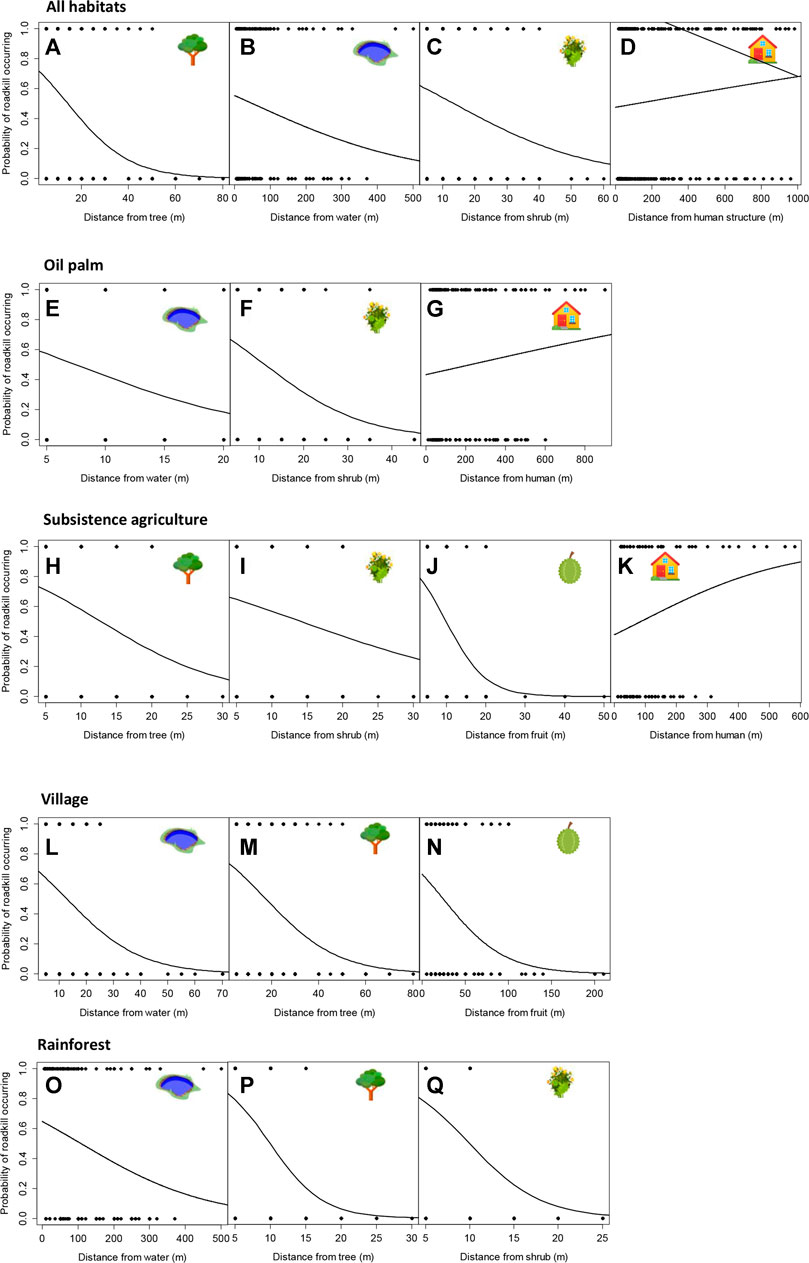
FIGURE 2. Probability that a roadkill will occur with increasing distance from the nearest water body (A), tree (B), shrub (C) or human dwelling (D) in all habitats and for all taxa combined; water body (E), shrub (F) or human dwelling (G) in oil palm habitat; tree (H), shrub (I), fruit tree (J) or human dwelling (K) in subsistence agriculture habitat; water body (L), tree (M) or fruit tree (N) in village habitat; and water body (O), tree (P) or shrub (Q) in rainforest habitat.
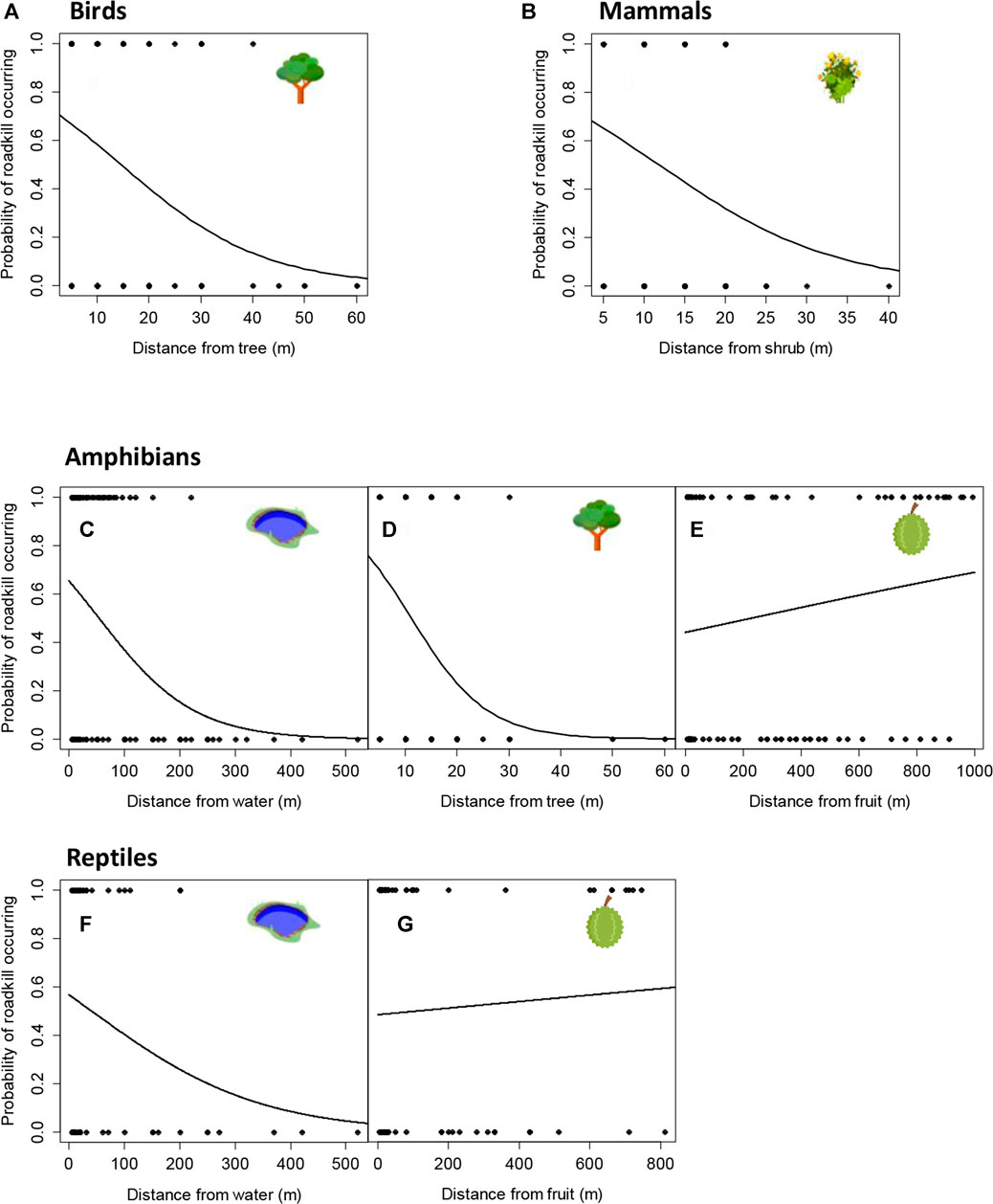
FIGURE 3. Probability that a bird roadkill will occur with increasing distance from the nearest tree (A); that a mammal roadkill will occur with increasing distance from the nearest shrub (B); that an amphibian roadkill will occur with increasing distance from the nearest water body (C), tree (D) or fruit tree (E); and that a reptile roadkill will occur with increasing distance from the nearest water body (F) or fruit tree (G).
The publisher apologizes for this mistake. The original version of this article has been updated.
Keywords: infrastructure impacts, threatened species, vertebrate, rural habitats, agriculture, oil palm, forest, land use planning
Citation: Frontiers Production Office (2022) Erratum: Roadkills in Northern Peninsular Malaysia. Front. Environ. Sci. 9:830603. doi: 10.3389/fenvs.2021.830603
Received: 07 December 2021; Accepted: 07 December 2021;
Published: 12 January 2022.
Approved by:
Frontiers Editorial Office, Frontiers Media SA, SwitzerlandCopyright © 2022 Frontiers Production Office. This is an open-access article distributed under the terms of the Creative Commons Attribution License (CC BY). The use, distribution or reproduction in other forums is permitted, provided the original author(s) and the copyright owner(s) are credited and that the original publication in this journal is cited, in accordance with accepted academic practice. No use, distribution or reproduction is permitted which does not comply with these terms.
*Correspondence: Frontiers Production Office, production.office@frontiersin.org
 Frontiers Production Office
Frontiers Production Office